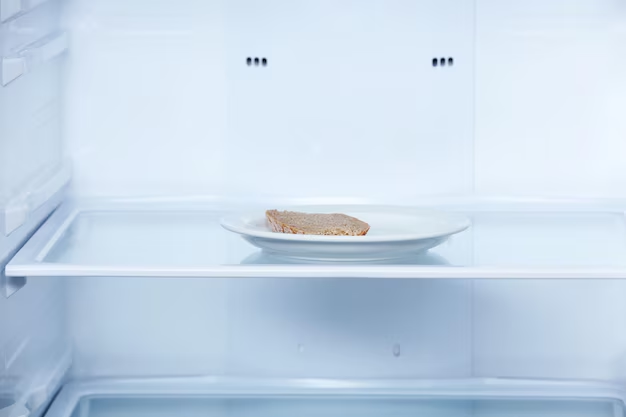How Quickly Will Your New Fridge Chill Out: A Complete Guide
Imagine this: you've just brought your brand new refrigerator home. It's sitting in your kitchen, shiny and full of promise. But before you can start filling it with your groceries, there's an important question that needs answering: How long does it take a refrigerator to cool down? This seemingly straightforward question encompasses a range of factors, each playing a crucial role in your fridge's performance. Today, we'll explore those factors, provide practical tips for optimizing your refrigerator's efficiency, and extend the conversation into related areas of food storage and shelf life. Let’s dive in!
🕰 The Short Answer
Typically, a refrigerator can take anywhere from 4 to 24 hours to reach the desired temperature, depending on various conditions. Why such a broad range? Because several factors can influence the cooling speed, including the type of refrigerator, its size, the ambient room temperature, and whether it's already stocked with food.
Factors Affecting Cooling Time
1. Type and Model of Refrigerator
Refrigerator technology has evolved significantly, and various types have different cooling efficiencies:
- Top-Freezer Models: Generally, these are quicker in cooling compared to others, as they often have a more straightforward cooling system.
- Side-by-Side and French Door Models: These can take longer to cool because of their larger size and more complex systems.
- Compact or Mini Fridges: These usually cool down faster due to their smaller size and less storage capacity.
2. Size and Capacity
Size matters. A larger fridge means more air space to cool, which can lengthen the time it takes to reach the optimal temperature. Smaller refrigerators with limited interior space can reach desired temperatures more swiftly.
3. Ambient Temperature
Location is key. Refrigerators placed in warmer rooms or near heat sources like ovens or direct sunlight will take longer to cool down. The ambient temperature of the room significantly impacts the cooling speed of your fridge.
4. Initial Condition
Starting with a previously stored or warm refrigerator can greatly influence cooling time. A brand new fridge typically needs more time if it's cooling from room temperature. Similarly, moving a previously-used fridge means it might start cooling from an ambient base rather than a completely fresh start.
5. Stocked or Empty
An empty refrigerator can initially cool faster, as it only needs to lower the temperature of the air inside. However, once you add warm food items, it will take additional energy and time to bring those items down to the desired temperature.
Optimizing Your Refrigerator's Performance
To ensure your refrigerator works efficiently and cools down as quickly as possible, consider these valuable tips:
Proper Placement
- Avoid Heat Sources: Keep your fridge away from ovens, dishwashers, and direct sunlight. This helps maintain a cooler external environment.
- Adequate Ventilation: Ensure there's enough space around the fridge—typically at least a few inches on all sides—for air to circulate. This prevents the motor from overheating and reduces cooling efficiency.
Initial Setup
- Let It Settle: Once placed, allow your fridge to settle for a few hours—especially if moved or tilted—to let the refrigerant settle.
- Adjust the Thermostat: Set the thermostat to the manufacturer's recommended setting. For most models, this is around 37°F (3°C) for the fridge and 0°F (-18°C) for the freezer.
Smart Loading
- Don’t Overload: Overloading restricts airflow, hindering efficient cooling. Balance loading by evenly distributing food.
- Cool the Food First: If possible, let hot food cool to room temperature before placing it inside the fridge. This reduces the strain on the cooling system.
Relating it to Food Storage & Shelf Life
Now that your fridge is functioning optimally, how does it impact food storage and shelf life?
1. Temperature Consistency is Key
Maintaining a consistent internal temperature ensures food safety and maximizes shelf life. Sudden temperature variations can lead to spoilage, bacterial growth, and wasted food.
2. Shelf Arrangement Matters
- Top Shelves: Best for items that don’t need cooking, such as drinks or ready-to-eat foods.
- Middle Shelves: Ideal for dairy products and leftovers, offering a consistent, cool environment.
- Lower Shelves: Coldest part; perfect for raw meat and poultry, ensuring any drips don’t contaminate other foods.
- Crisper Drawers: Designed for fruits and vegetables to maintain proper humidity and freshness.
3. Consider Door Storage Carefully
The fridge door is the warmest area, making it suitable for condiments but unsuitable for highly perishable items like eggs or dairy.
Common Myths & Misunderstandings
Myth 1: Setting the Thermostat Colder Cools It Faster
Contrary to popular belief, setting the thermostat to the coldest setting doesn’t quicken the cooling process. Instead, it overworks the system, potentially leading to freezing or uneven cooling.
Myth 2: Frequent Opening Doesn’t Affect Cooling
Opening the door frequently or for too long significantly impacts internal temperature stability, prolonging the cooling process each time you close it again.
Practical Takeaways with Visual Summary
Here's a simple way to remember how to ensure your refrigerator cools efficiently and supports optimal food storage:
Wrapping It Up
Understanding how long it takes your refrigerator to cool down is more than just satisfying curiosity. It's about optimizing efficiency and ensuring your food stays fresh and safe. By applying knowledge of the influencing factors, proper setup, and mindful loading, you not only shorten cooling time but also enhance the overall performance and longevity of your appliance. Remember, the refrigerator is a cornerstone of your kitchen, playing a crucial role in food storage, so treat it with the attention and care it deserves.
